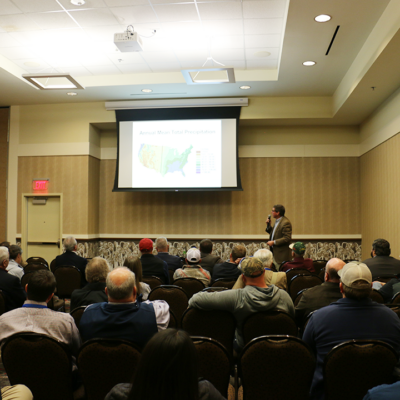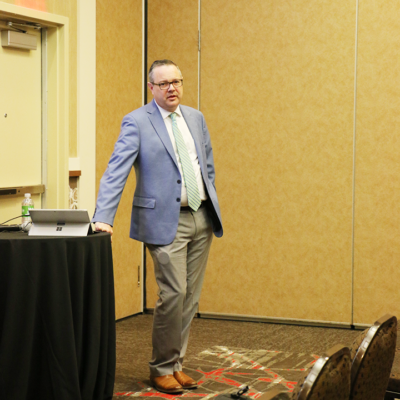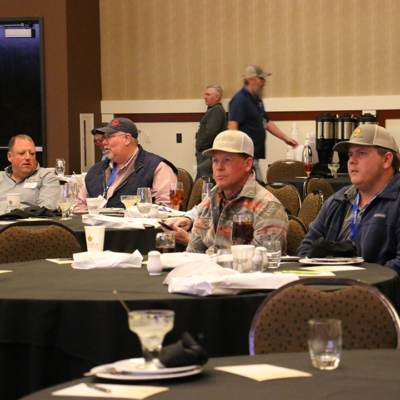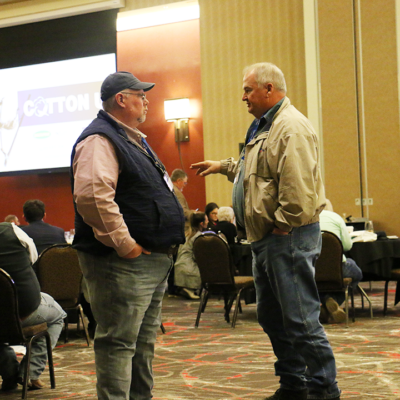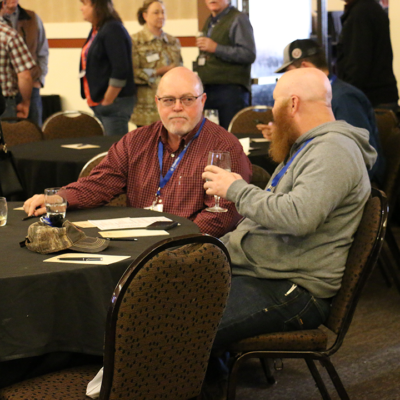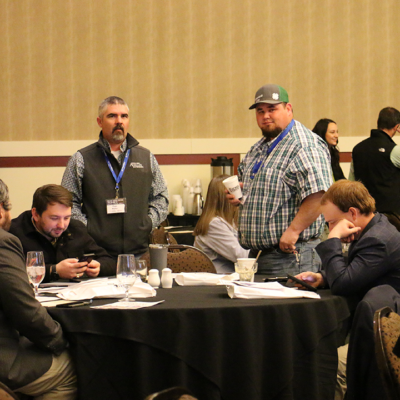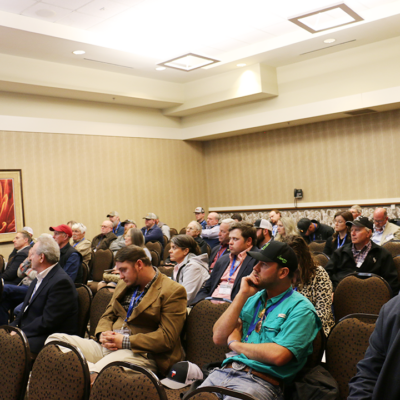Welcome to the March 31, 2023 issue of Cotton News, a service provided by Plains Cotton Growers Inc. for the cotton industry in the Texas High Plains and beyond.

PCG Annual Meeting Recap: ‘There is Nothing Better Than This Way of Life’
Plains Cotton Growers Inc. held its 66th annual meeting at the Overton Hotel and Conference Center on March 28, 2023.
While adversity has had the cotton industry in a chokehold over the past 15 months, the industry’s people continue to prove their grit and resiliency.
As PCG President Martin Stoerner, producer in Floyd County, mentioned in his speech, “We pivot as farmers, pardon the pun. When something doesn’t work or if something happens outside our control, we pivot and keep going.”
Close to 300 people comprised of producers, extension agents, national cotton organizations, industry representatives and Congressional staff members gathered to hear stories and data from Tyne Morgan, Mark Messura and John Kriesel.
“West Texas is special,” Tyne began in her agriculture industry outlook. “And not just because my husband is from Plainview.”
Morgan, host of the U.S. Farm Report, covered commodity planting intentions, weather, markets, policy and more, as she summed up the state of the ag industry on a national and regional scale. However, she ended on a surprising note.
“That notion we have that farmers aren’t appreciated is not true. While attending a John Deere trade show event, I noticed that the farmers were treated as celebrities. Everyone wanted to talk to them and get their insight. It was incredible.”
And in terms of all-electric tractors? Morgan visited with John Deere Chief Technology Officer Jahmy Hindman while at this event who stated, “I talked about the 8R tractors. When I ran the numbers on it, if you power that with a lithium-ion battery today, it’s twice the volume, twice the weight, twice the mass, and four times the cost. That just doesn’t pencil.” 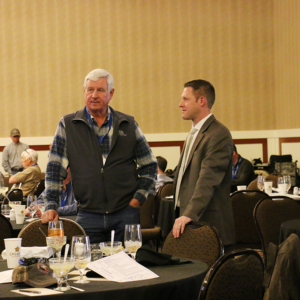
Mark Messura, senior vice president of the Global Marketing Supply Division of Cotton Incorporated, discussed the efforts to market cotton worldwide. “Cotton is the natural fiber, but not a natural choice when it comes to purchasing decisions,” he added. He emphasized the need to shift consumer perception when it comes to cotton as it is the most sustainable choice in the marketplace today.
John Kriesel a retired Army staff sergeant, who fought in Kosovo and Iraq brought us a powerful message on the choices we make when faced with adversity. Kriesel lost both of his legs and two of his closest friends when his Humvee triggered an improvised explosive device (IED).
“I know that you guys have faced many challenges this past year with the drought and face a lot of uncertainty in this coming crop year,” he said. “But you can still make a choice to have a positive attitude. I tell my story and I look out among you and see a lot of serious faces. Don’t pity me. I am so much happier with my life now after the IED incident than I was before — because I got a second chance at life. I appreciate you and what you do for our nation. Make the choice to see the bright side as you continue to do what you do.”
The farm partnership panel featuring Mark and Bryce Howard from Dallam County and Travis and Landon Mires from Lynn County focused on several issues and ended with a discussion of the future.
“People are the most critical component of the operation to me,” said Bryce Howard. “They are also the biggest issue I see in the future. I’m focused on fostering a healthy culture for the people in our organization.”
He’s not alone in that. The people are unmatched in every facet of the cotton industry. The fellowship and gathering of likeminded men and women was good for the soul as we prepare for crop year 2023.
And while we focused on weed control, sustainability, markets and hedging, farm bill policy, future concerns, etc., we also visited, laughed, and caught up with friends we hadn’t seen in a while.
The day we had together is best summed up by Steve Olson, producer in Hale County, who stated during the farm practices panel at the end of the day, “There is nothing better than this way of life we lead.”
Thank you to all who came and celebrated the Texas High Plains cotton industry with us and to our sponsors who made the entire event possible.
El Nino Seen Boosting U.S. Cotton Output After Worst Drought in Years
The El Nino weather pattern could boost yields in the second half of the year for U.S. cotton farmers, who were forced to abandon a big chunk of their cropland in 2022 after one of the worst droughts in years.
While El Nino typically brings dry weather to Asia, with impacts already being felt in Australia, Indonesia and India, it is known for wet weather in parts of North and South America.
The National Weather Service has forecast a more than 50% chance of El Nino forming during the northern summer of 2023.
“If we move into an El Nino pattern, we would see more rainfall in the U.S. and this would mean higher production, higher yields and less abandonment this year,” said Bailey Thomen, cotton risk management associate at StoneX Group.
Last year, more than three-quarters of Texas, which accounts for about 40% of U.S. cotton output, suffered from one of the worst droughts in years.
As a result, U.S. farmers were forced to abandon a record amount of their land, with the resultant supply shortfall driving prices to an 11-year peak in May.
“Last year, Texas had almost 70% abandonment due to drought,” the Texas Farm Bureau said.
However, too much rainfall may prove to be a spoilsport, leading to yield losses and quality downgrades.
“The most crucial part will be when the rains arrive. It will be great if they arrive by April-May,” Kansas-based commodity analyst Sid Love said.
Expectations of higher U.S. cotton output come at a time of weakening global demand for the fiber.
Demand concerns have prompted about 6% decline in U.S. cotton futures CTc1, CTc2 this year, and prices hit a 20-week low this week amid the ongoing banking sector crisis. COT/N
The USDA lowered its 2022/23 world cotton consumption estimates to 110.11 million bales in March, from 110.66 million bales forecast a month ago.
The market will be highly dependent on what happens with the global economy, said Matthew Looney, data scientist at International Cotton Advisory Committee, predicting consumption would remain low into the 2023/24 season.
“China’s recovery is a positive sign while the ongoing banking crisis poses economic risks which could weigh on demand,” said Jim Nunn, owner of Tennessee-based cotton brokerage Nunn Cotton.
U.S. Cotton Production Affected by Drought https://tmsnrt.rs/3JEqMcW
(Reporting by Ashitha Shivaprasad and Rahul Paswan in Bengaluru; Editing by Naveen Thukral)
Prospective Plantings Report
This report from the USDA National Agricultural Statistics Service contains the results from the March Agricultural Survey which was conducted during the first two weeks of March 2023. The estimates provided in this report are intended to reflect grower intentions as of the survey period. New acreage estimates will be made based on surveys conducted in June when crop acreages have been established or planting intentions are firm.
Texas Upland cotton is expected to total 6.20 million acres, down 21 percent from last year. Planting of Pima cotton is expected to total 35 thousand acres, 6 percent above 2022. Growers intend to plant 2.05 million acres of corn, down 5 percent from last year. Producers intend to plant 1.45 million acres of sorghum this year, unchanged from last year.
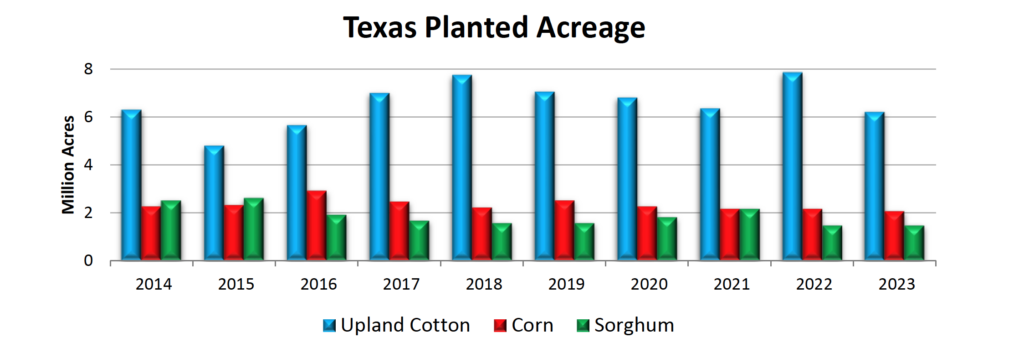
Deadlines and Reminders
Conservation Reserve Program Sign-up Dates
General sign up for the Conservation Reserve Program (CRP) began February 27 and ends April 7.
U.S. Cotton Trust Protocol
March 31, 2023 (today!), is the deadline for U.S. cotton producers to enroll their 2023 crop in the U.S. Cotton Trust Protocol.
PCG Annual Meeting Feedback Survey
We value your feedback! Please let us know your thoughts on our 66th annual meeting by taking the survey.


